ホーム > 組織でさがす > 環境エネルギー部 > 自然保護課 > Shirakami Mountains - World Heritage Region
関連分野
- くらし
- 自然保護
更新日付:2012年3月14日 自然保護課
Shirakami Mountains - World Heritage Region
World Heritage Region
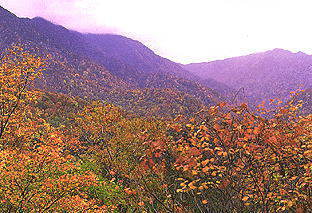
The World Culture Heritage and Nature Heritage Conservation Agreement was adopted at a general meeting of UNESCO in 1972 for the preservation of culture of global importance and natural heritage. As well as conserving their own heritage, signatory nations work for the preservation of the precious heritage of developing countries through a World Heritage Fund.
As of November 2011 there were 188 signatory nations, Japan joined them as the 125th conclusion country in 1992.
936 regions were registered as a world heritage, including the Grand Canyon National Park (U.S.A), the Galapagos archipelago (Ecuador), the Giza Pyramid (Egypt), and the Taj Mahal (India). Of these sites, 183 are natural heritage, 725 cultural heritage, and 28 are a combination of the two.
○Japan's World Heritage
As of September 2009, Japan had registered 13 world heritage sites.
Japan's natural heritage :Shirakami Mountains, Yaku island, Shiretoko
Japan's cultural heritage:Himeji Castle, Buddhist structures in the Horyuji area, ancient city Kyoto's cultural assets, the community of wooden houses with steep rafter roofs (Gassho-zukuri) in the Shirakawago and Gokasan area, an monumental dome in Hiroshima destroyed by the atomic bomb and Itsukushima shrine in Miyajima, Monument of Ancient Nara, Shrines and Temples of Nikko,
Gusuku Sites and Related Properities of the Kingdom of Ryukyu, Secred Sites and Pilgrimage Routes in the kii Mountain Range, Iwami Ginzan Silver Mine and its cuitural Landscape.
Shirakami Mountains area

Around three quarters of this land (12,627 hectares) lie in Aomori prefecture.
Geological features and topography of the Shirakami Mountains
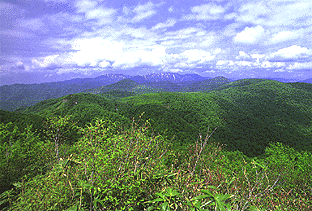
The geological features of the Shirakami area comprise a foundation of granite created approximately 90 million years ago interpenetrated with sedimentary rock from about 20 million to 12 million years ago (rock created from magma that rose from deep within the earth). It is composed of rhyolite, quartz diorite, and other rocks.
A topographical feature is fabulous scenery and numerous precipitous waterfalls caused by the presence of deep interlocking valleys with steep slopes.
Topography
The rivers that flow through the Shirakami Mountains are the Ou, the Anmon, the Akashi, the Oirase, and the Sasauchi on the Aomori prefecture side, and the Kasuge on the Akita prefecture side. A ridge of mountains 1,000 meters to 1,200 meters high divides the flow of each of these rivers.
Features of the Shirakami Mountains
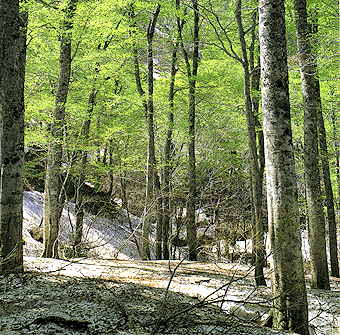
Moreover, this natural forest contains a great variety of trees and plants, including communities of Japanese beech-oak and wing nut. Despite the high latitude, an extremely large variety of animals live here, including the TSUKINOWA bear, Japanese monkey, black woodpecker, and golden eagle. The entire Shirakami Mountains area is exhibited as a forest museum.
Especially, the world heritage area is one of the best-preserved virgin forests. This gives it a reputation as a site of great importance, even on a global level.
Major Fauna and Flora of the Shirakami Mountains
Plants
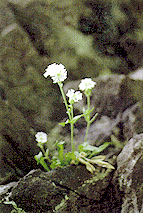
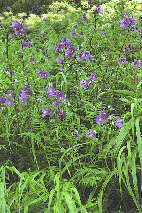
Often found on windy, grassy plains at altitudes of around 1,200 meters.
It produces a blue flouwer around July.
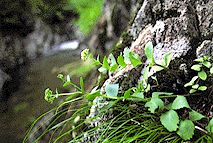
Mammals
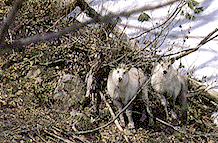
Japanese dormouse
A small animal of the mouse family. It is a nocturnal animal living on trees. In
winter, it hibernates in a tree hollow making his body round, like a ball. It hibernates during the winter.
It is an unusual animal that exists only in Japan, and has been designated as a special national natural monument.
winter, it hibernates in a tree hollow making his body round, like a ball. It hibernates during the winter.
It is an unusual animal that exists only in Japan, and has been designated as a special national natural monument.
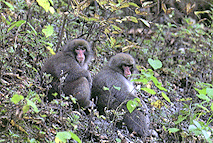
TSUKINOWA bear
It is the largest land mammal that inhabits the mainland of Japan, it stands 120-145cm high, and weighs 70-120kg. Although it is an omnivorous animal, it prefers eating vegetabie. It lives in a hole in a big tree or rock only when it hibernates.
Birds
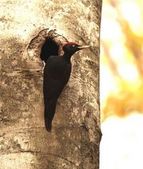

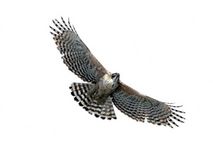

The Shirakami-Sanchi Proclamation
Although the advance of civilization has been accompanied by the gradual loss of nature from the earth, we are fortunate that a lush natural forest still remains in Japan.
Straddling the border between Aomori and Akita Prefectures lies the Shirakami-Sanchi, a vast natural beech forest with a unique ecosystem. In December 1993, UNESCO recognized its importance for the world by registering it as the first World Natural Heritage Site in Japan. This established the need for the Shirakami-Sanchi to be protected for all ages, not only by Japan, but by the entire world.
The rain that falls on the trees of the beech forest trickles down leaves and stems to be absorbed by the soil. It seeps into the rivers and so moves on to sea, nourishing a variety of plants and animals and bestowing rich blessings on its way. Then the water of the sea evaporates into clouds and returns to the forest, and the grand cycle of life resumes.
The Shirakami-Sanchi is one of Nature's greatest treasures, and it is the duty of mankind to safeguard it for future generations. Now, at the beginning of the twenty-first century, the people of Aomori and Akita Prefectures, their hearts united, show their determination to uphold this ideal by issuing this proclamation.
Straddling the border between Aomori and Akita Prefectures lies the Shirakami-Sanchi, a vast natural beech forest with a unique ecosystem. In December 1993, UNESCO recognized its importance for the world by registering it as the first World Natural Heritage Site in Japan. This established the need for the Shirakami-Sanchi to be protected for all ages, not only by Japan, but by the entire world.
The rain that falls on the trees of the beech forest trickles down leaves and stems to be absorbed by the soil. It seeps into the rivers and so moves on to sea, nourishing a variety of plants and animals and bestowing rich blessings on its way. Then the water of the sea evaporates into clouds and returns to the forest, and the grand cycle of life resumes.
The Shirakami-Sanchi is one of Nature's greatest treasures, and it is the duty of mankind to safeguard it for future generations. Now, at the beginning of the twenty-first century, the people of Aomori and Akita Prefectures, their hearts united, show their determination to uphold this ideal by issuing this proclamation.
- The Shirakami-Sanchi is the nucleus of a natural world in which forests, rivers, and the sea spread in variegated circles of life. We will never cease to admire the wonders of Nature that originate here.
- The Shirakami-Sanchi is a place for meditation. By allowing the peace of the natural beech forest to sink into us, we will be moved by new emotions and think more deeply about ourselves.
- The Shirakami-Sanchi is a natural museum. Filled with gratitude that these venerable woods have been passed down to us, each of us will follow the rules so the beauty of the natural beech forest may be preserved.
7 October 2001
Aomori and Akita Prefectures, Japan
Aomori and Akita Prefectures, Japan



